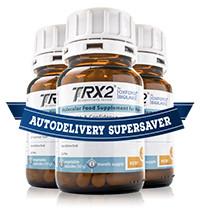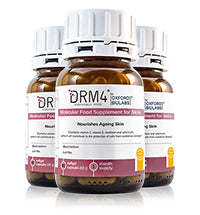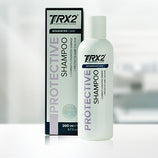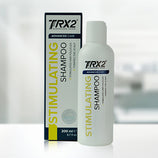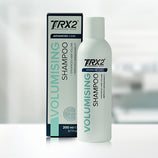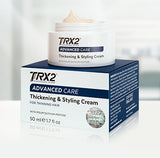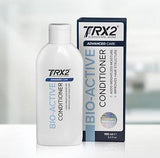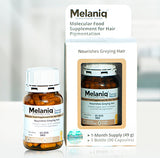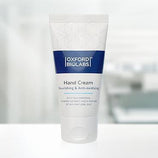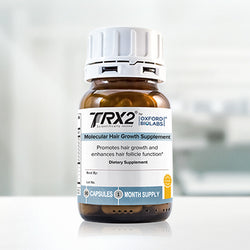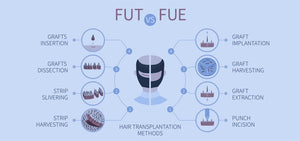It might sound mundane, but learning about the hair and scalp will give us a much better understanding of the physiological mechanisms responsible for Androgenetic Alopecia (pattern hair loss) and will allow you to choose the right products for you and improve your personal system on how to deal with your hair loss situation.
Contrary to popular belief, hair does not just “fall out” of the scalp. Common hair loss is actually caused by a hormone metabolite known as dihydrotestosterone (DHT). Continued exposure to DHT weakens healthy hair follicles that are genetically susceptible to degradation. Over time, the hair shafts produced by these follicles miniaturize until they fail to produce cosmetically significant hair fibers.
The hair follicle is an extremely complex mini-organ that is comprised of many specialised cells and interdependent structures. The hair follicle works in symbiosis with our skin (the largest organ in the human body) to provide sensory information, disease protection and temperature regulation for our body.
Our skin has 3 layers: the epidermis, the dermis and the subcutaneous tissue.
The epidermis is the outer layer of the skin. It consists of two levels: the stratum basale and the stratum corneum. Skin cells that originate in the stratum basale are constantly shed and replaced as they move upwards towards the stratum corneum. The epidermis is usually less than 1 millimeter thick.
The dermis is the second layer of the skin. It is comprised of collagen, elastic tissue and reticular fibers. Like the epidermis, the dermis also has two levels: the papillary layer and the reticular layer. These components give the skin its strength and laxity. The dermis is generally 2-3 millimeters thick and contains many important structures like hair follicles and oil glands.
The subcutaneous tissue is a layer of fat and connective fibers that contains many nerve branches and blood vessels that provide nourishment to the skin. The size of this layer is variable. The hair follicle is even more complex than the skin. It has numerous components:
The sebaceous gland is a very unique structure within the hair follicle. It produces sebum, which acts as a natural conditioner for our hair and scalp.
The inner root sheath protects and molds developing hair shafts. It surrounds the hair shaft and ends below the opening of the sebaceous gland. The outer root sheath serves much the same purpose of the inner root sheath. Essentially it forms the outer layer of the hair follicle. Instead of ending at the sebaceous gland however, it extends past it towards the dermis.
The dermal papilla directs the embryonic generation of the hair follicle. The DP is essential for hair follicle development and cycling. For this reason, many new therapies are being targeted to harness the regenerative power of the dermal papilla.
The bulb exists at the lower portion of the hair follicle. It surrounds the dermal papilla and contains many inner matrix cells. These inner matrix cells are responsible for the formation of hair shafts. They differentiate themselves into distinct layers as they reach the upper part of the bulb.
Finally, the hair shaft itself has 3 layers:
The cuticle is the surface layer of the hair; this layer protects the inner structure of the hair. The cuticle is made up of transparent, protective-like scale cells.
The cortex is the middle layer of the hair that provides strength and support; contains pigments that give hair its color.
The medulla is the innermost layer of the hair shaft; it is only present in fully grown hair.
Dr. Whitfield answers your questions.
Question: My name is Rio F. I came across your company through an article in the telegraph regarding a research project lead by Dr. Thomas Whitfield aimed at hair loss.
I have chemotherapy induced hair loss, together with potential male pattern baldness (my dad is bald). It has been nearly 7 months since I stopped chemotherapy and my hair is slightly growing back, but in patches.
Will your product be suitable for my type of hair loss?
Also, I have a son who is 17 years old and suffering from thinning hair. Most likely he has MPB as well. Will your product help for thinning hair?
Regards, Rio F. – sent via email
Answer: Thanks a lot for your interest in our company. To answer your questions:
A) Yes, our product will be suitable for your type of hair loss.
B) Our upcoming product is all-natural and therefore it won’t have any significant side effects; As such I have no hesitations recommending it to you and your son. Actually, I recommend using it to treat pattern baldness at its earliest onset.
I hope my answers are helpful & encouraging to you. I hope you will fully recover from chemotherapy soon & I wish you the very best!!!
Send your questions to AskTom@trx2.com .
For more questions and answers, go to FAQ
Thomas F.A. Whitfield, DPhil, is an internationally recognized expert on potassium ion channels, former scientist of the University of Oxford’s Department of Biochemistry and member of TRX2®’s Scientific Advisory Board.
The precise physiological mechanisms responsible for genetic hair loss have eluded scientists for years. This explains why, in spite of an extremely large patient population, very few solutions currently exist.
TRX2® recognised this important unmet clinical need and, based on years of prior research, devised an elegant solution – the stimulation of potassium ion channels.
The recent discovery that potassium ion channels exist within the dermal papilla of human hair follicles provided a novel therapeutic target for researchers. By restoring the functionality of potassium ion channels that have broken down over time, our proprietary Molecular Hair Growth Supplement has been proven to postpone the progression of hair loss indefinitely. It truly is the first product of its kind.
So, haven’t you waited long enough? Order your first shipment today and reserve your spot in history. You are worth it!
This Research Update column highlights articles related to recent scientific inquiry into the process of hair loss. It is not intended to promote any specific ingredient, regimen, or use and should not be construed as evidence of the safety, effectiveness, or intended uses of the TRX2 ® product. The TRX2 ® label should be consulted for intended uses and appropriate directions for use of the product.
